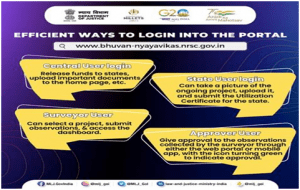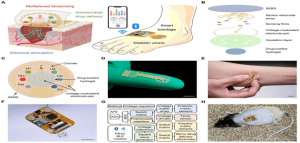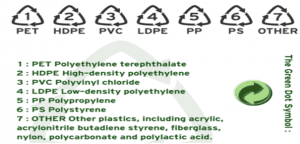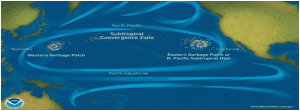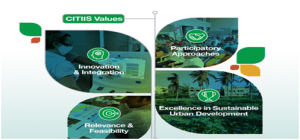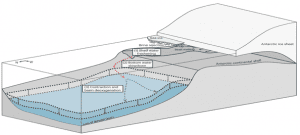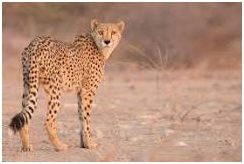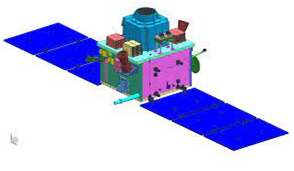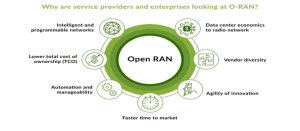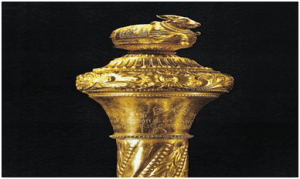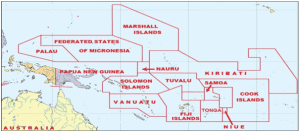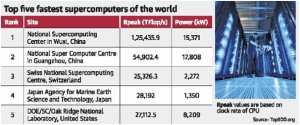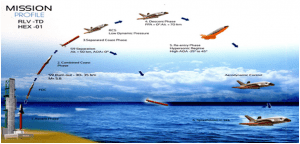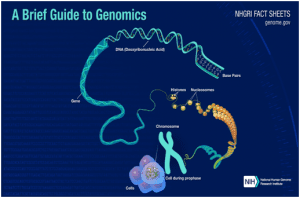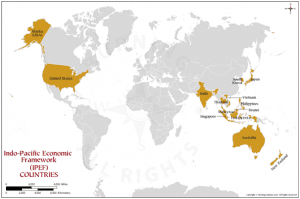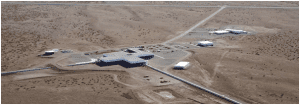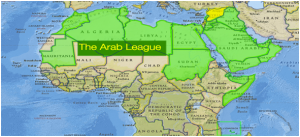TOP 5 TAKKAR NEWS OF THE DAY (17th JUNE 2023)
1. TRANSGENIC CROPS
TAG: GS 3: ENVIRONMENT
THE CONTEXT: Three States, Gujarat, Maharashtra and Telangana, have deferred a proposal, approved by the Centre’s Genetic Engineering Appraisal Committee (GEAC), to test a new kind of transgenic cotton seed that contains a gene, Cry2Ai, that purportedly makes cotton resistant to pink bollworm, a major pest. The conflict shows that a broad acceptance of genetically modified crops continues to be elusive.
EXPLANATION:
What is the status of transgenic crops in India?
- There is wide variety of crops as brinjal, tomato, maize, chickpea in various stages of trials that employ transgenic technology. However, cotton remains the only transgenic crop that is being commercially cultivated in India.
- After a long wait, the GEAC, the apex technical body charged with evaluating proposals for testing genetically modified (GM) seeds, approved the environmental release of Mustard hybrid DMH-11 and its parental lines in 2022 for seed production and testing.
- In 2010, the GEAC had approved GM Brinjal, but this was put on an “indefinite moratorium” by the United Progressive Alliance government.
What is the process of regulating transgenic crops in India?
- The process of developing transgenic crops is an elaborate one as inserting transgenic genes into plants to elicit a sustained, protective response is a mix of both science and chance.
- There are multiple safety assessments done by committees before they are cleared for further tests in open plots of land which are located at either agricultural universities or plots controlled by the Indian Council for Agricultural Research (ICAR).
- A transgenic plant can apply for commercial clearance, only after it has proven to be demonstrably better than comparable non-GM variants on claimed parameters (for instance, drought tolerance or insect resistance) without posing ecological harm to other species that may be being cultivated in the vicinity.
- Open field trials often take place over multiple crop seasons and types of geographical conditions, to assess its suitability across different States.
What is the issue?
- The cotton seed has been developed by the Hyderabad-based Bioseed Research India with Cry2Ai which makes it resistant to pink bollworm.
- The first generations of transgenic cotton had been developed to inure cotton against a more widespread pest called the American bollworm.
- The Cry2Ai seed has passed preliminary, confined trials and was recommended by the GEAC to be tested in farmer’s fields at Telangana, Maharashtra, Gujarat and Haryana.
- This was after the GEAC in October 2022 sent letters to all States to communicate their views within two months on the proposal. States responded that the proposal was unacceptable to them.
Are there changes in the offing in process of regulation of GM crops?
- The GEAC consists of a panel of plant biotechnologists and is headed by a senior official of the Environment Ministry and co-chaired by the scientist of the DBT
- To resolve the issue of States not according to approvals on testing, because of differing attitudes to GM crops, the GEAC is considering a proposal by the DBT to declare some regions across India as ‘notified testing sites.
Genetic Engineering Appraisal Committee (GEAC)
- It functions in the Ministry of Environment, Forest and Climate Change(MoEF&CC).
- As per Rules, 1989, it is responsible for appraisal of activities involving large scale use of hazardous microorganisms and recombinants in research and industrial production from the environmental angle.
- The committee is also responsible for appraisal of proposals relating to release of genetically engineered (GE) organisms and products into the enviornment including experimental field trials.
- GEAC is chaired by the Special Secretary/Additional Secretary of MoEF&CC and co-chaired by a representative from the Department of Biotechnology (DBT).
- Presently, it has 24 members and meets every month to review the applications in the areas indicated above.
2. NON-COMMUNICABLE DISEASES
TAG: GS 2: HEALTH ISSUES
THE CONTEXT: The new national estimates for diabetes and other non-communicable diseases (NCD) shows that 31 million more Indians became diabetic in four years (2019-2021).
EXPLANATION:
What were the findings?
- In 2021, a study found that India has 101 million people with diabetes and 136 million people with prediabetes.
- Additionally, 315 million people had high blood pressure; 254 million had generalised obesity, and 351 million had abdominal obesity.
- 213 million people had hypercholesterolaemia (wherein fat collects in arteries and puts individuals at greater risk of heart attack and strokes) and 185 million had high low-density lipoprotein (LDL) cholesterol.
- The decade-long nationwide study was funded by the Indian Council of Medical Research and Department of Health Research, Ministry of Health and Family Welfare and co-ordinated by the Madras Diabetes Research Foundation. The results of the study are to be published in The Lancet Diabetes and Endocrinology journal.
What is the significance of the study?
- The study is the first comprehensive epidemiological research paper which includes participants from 31 States and some Union Territories. There are two big trend indicators in the study.
- First, diabetes and other metabolic non-communicable diseases, such as hypertension, obesity and dyslipidemia are much more common than estimated previously in India.
- Second, while currently urban regions had higher rates of all metabolic NCDs than rural areas, with the exception of prediabetes, rural India will see a diabetes explosion in the next five years if left unregulated.
- While the diabetes epidemic is stabilising in the more developed States of the country, it is still increasing in most of the other States. Thus, there are serious implications for the nation, warranting urgent State-specific policies and interventions to arrest the rapidly rising epidemic of metabolic NCDs in India.
Status of Non communicable disease:
- India is experiencing a rapid health transition with a rising burden of Non-Communicable Diseases (NCD) surpassing the burden of Communicable diseases like water-borne or vector borne diseases, TB, HIV, etc.
- The four major NCDs are cardiovascular diseases (CVDs), cancers, chronic respiratory diseases (CRDs) and diabetes which share four behavioural risk factors – unhealthy diet, lack of physical activity, and use of tobacco and alcohol.
- Meanwhile, a study ‘India: Health of the Nation’s States – The India State-Level Disease Burden Initiative in 2017’ by Indian Council of Medical Research (ICMR) estimated that the proportion of deaths due to NCDs in India have increased from 37.9% in 1990 to 61.8% in 2016.
- Non-Communicable Diseases like Cardiovascular diseases, Cancer, Chronic Respiratory Diseases, Diabetes, etc. are estimated to account for around 60% of all deaths. NCDs cause considerable loss in potentially productive years of life. Losses due to premature deaths related to heart diseases, stroke and Diabetes are also projected to increase over the years.
National Programme for Prevention & Control of Non-Communicable Diseases (NP-NCD)
- The existing National Programme for Prevention and Control of Cancer, Diabetes, Cardiovascular Diseases and Stroke (NPCDCS) programme has been renamed National Programme for Prevention & Control of Non-Communicable Diseases (NP-NCD) amid widening coverage and expansion.
- Ministry of Health and Family Welfare (MoHFW) has decided to rename the portal which enables population enumeration, risk assessment, and screening for five common NCDs, including hypertension, diabetes, and oral, breast and cervical cancers of the population aged above 30 years.
- Now Schemes subsume all types of NCDs with an addition of diseases to the National Programme for Prevention and Control of Cancer, Diabetes, Cardiovascular Diseases and Stroke (NPCDCS), such as non-alcoholic fatty liver disease, chronic kidney disease etc.
- NP-NCD is being implemented under the National Health Mission (NHM) across the country.
- Under NP-NCD, NCD Cells are being established at National, State and District levels for programme management, and NCD Clinics are being set up at District and CHC levels, to provide services for early diagnosis, treatment and follow-up for common NCDs.
Objectives of NP-NCD
- Health promotion through behaviour change with involvement of community, civil society, community based organizations, media etc.
- To prevent and control chronic non-Communicable diseases, especially Cancer, Diabetes, CVDs and Stroke.
- To support for diagnosis and cost-effective treatment at primary, secondary and tertiary levels of health care.
- To support for development of database of NCDs through Surveillance System and to monitor NCD morbidity and mortality and risk factors.
3. TRANSCRANIAL MAGNETIC STIMULATION (TMS)
TAG: GS 3: SCIENCE AND TECHNOLOGY
THE CONTEXT: Recently, a study by Stanford University researchers reported some evidence that in people without depression, a part of the brain called the anterior insula sends signals to another part called the anterior cingulate cortex, whereas in people with depression, the signal goes the other way. According to the researchers, TMS may be alleviating depression by reversing the signal to go the right way.
EXPLANATION:
- The technique is used to non-invasively modulate the cortical activity of the brain.
- Magnetic pulses applied non-invasively to the scalp can stimulate the brain, to reverse brain changes, and to bring about rapid relief to severely depressed patients for whom standard treatments may have failed. This non-invasive brain stimulation modality is called repetitive transcranial magnetic stimulation (rTMS).
- rTMS is based on the phenomenon of electromagnetic mutual induction, first reported by Michael Faraday in 1831.
- rTMS generates brief electromagnetic pulses via an insulated coil placed over the scalp. These magnetic pulses non-invasively modulate the cortical activity of the brain.
- Daily rTMS stimulation for several weeks has also been shown to be effective in reducing the symptoms of a range of neuropsychiatric disorders.
- In 2008, the U.S. Food and Drug Administration (FDA) approved TMS as a treatment for clinical depression.
- The neuropsychological effects of TMS are particularly likely when a current is delivered in repetitive trains rather than as single pulses. If the stimulation occurs more quickly than once per second (1 Hz), it is called fast rTMS.
- It’s quite different from electroconvulsive therapy (ECT). Unlike ECT, rTMS does not involve producing a seizure, and does not require the person to be asleep or under anaesthetic
Why does TMS work?
- rTMS stimulation, over the course of a few weeks, increases neuronal activity in the area under the coil. It also changes the strength of connections between different areas of the brain. There is some reason to believe this restores the normal interaction between brain regions, although such hypotheses require further testing and replication.
- By briefly passing a current through a coil of wires, a strong and rapidly fluctuating magnetic field can be formed. This generates electrical currents in the underlying brain tissue. This also affects the membrane potential of nearby brain cells.
- rTMS can stimulate specific brain regions, such as the sensory or motor areas, to evoke corresponding sensory or motor responses. It can also interfere with ongoing brain activity and act as a brief virtual lesion.
What are the clinical applications?
- TMS has been used for many years in clinical neurophysiology to explore the integrity of the motor cortex of the brain after a stroke.
- Clinically, rTMS has been used to relieve depressive states. In the treatment of depression, 40 pulses of stimulation are delivered over four seconds, followed by a gap of 26 seconds before the next 40 pulses. A brain area called the left prefrontal cortex, which is in the front part of the brain, is targeted in this process.
- Research studies have also examined whether active and sham (dummy) TMS produce the same clinical response in depression. These studies concluded that greater response was observed in patients who received active treatment.
- rTMS has also been used to treat refractory obsessive compulsive disorder (OCD). Although the FDA has approved the use of rTMS for refractory OCD, more evidence and refinement in protocols are needed at this time. At present, it remains an add-on treatment.
- There is also preliminary evidence that rTMS relieves post-traumatic stress disorder (or PTSD).
Does TMS have adverse effects?
- Rarely, rTMS may induce seizures in at-risk patients, for example those with a family history of epilepsy. This is more likely with fast rTMS than with slow rTMS. However, current safety protocols have also greatly reduced the likelihood of seizures.
- Minor side-effects are more common, including muscle tension headaches. To prevent short-term changes in hearing threshold as a result of the noise generated by the equipment, earplugs are recommended during the session.
4. ALLIGATOR GAR FISH
TAG: GS 3: ENVIRONMENT
THE CONTEXT: Recently, a non-native alligator gar fish, known for its crocodile-like head and razor-sharp teeth, was found in one of Kashmir’s idyllic lakes, raising apprehensions about its impact on the native fish species.
EXPLANATION:
- The rare, carnivorous fish was caught by the Jammu and Kashmir Lake Conservation and Management Authority (LCMA) during the routine deweeding process near Sher-e-Kashmir International Convention Centre (SKICC), the main venue for the Group of Twenty (G20) tourism meeting in Srinagar, the summer capital of Jammu and Kashmir.
- The finding sent alarm bells ringing among the scientists; they fear that the presence of non-native fish species will spell doom for the eco-fragile flora and fauna of the waterbody.
- It would kill all fingerlings of fish species already present in the waterbody and has a tendency to destroy natural aquatic life of Dal Lake.
- Central Inland Fisheries Research Institute Barrackpore, said alligator gar fish is not an Indian species and normally found in northern and central America and also in Mexico. “But in recent years it was also found in some parts of India like Bhopal, Kerala and from the waterbodies of Maharashtra and Kolkata.
Alligator gar:
- The alligator gar is a close relative of the bowfin species. It is a ray-finned euryhaline fish and is one of the biggest freshwater fish in North America and the largest species in the ‘gar’ family.
- It is a predator fish and a carnivore, it can eat all types of fishes and therefore poses a threat to native species and to the overall ecosystem. For example, gar fish grows rapidly and has a life span of 20-30 years.

- Alligator gars feed on other fish and are thrown in Indian waterbodies knowingly or unknowingly. Gar fishes are euryhaline and can grow up to eight feet. They can be dangerous for indigenous fish species. During winter, they can even sustain in the cold waters of Dal because the temperature they mostly live in is 11-23 degrees Celsius.
- The Indian Biological Diversity Act 2002 prohibits the presence of any kind of invasive fish species that can be hazardous to natural fish fauna.
- Alligator gars are undoubtedly a serious threat to local biodiversity but only if they become adaptive in a particular environment.
5. PREDATOR UAV
TAG: PRELIMS PERSPECTIVE
THE CONTEXT: Defence Acquisition Council (DAC) approved the procurement of armed Predator Unmanned Aerial Vehicles (UAV) from General Atomics Aeronautical Systems (GA-ASI), an aeronautics company based in the United States. The procurement is now awaiting the final nod from the Cabinet Committee on Security.
EXPLANATION:
- As per GA-ASI, the MQ-9 UAV has an endurance of over 27 hours, speeds of 240 KTAS, can operate up to 50,000 feet, and has a 3,850 pound (1,746 kilograms) payload capacity that includes 3,000 pounds (1,361 kilograms) of external stores.
- The maritime variant of the MQ-9 UAV, known as Sea Guardian, has an endurance of over 30 hours.

- Once delivered and employed, these High-Altitude Long Endurance drones can carry out and boost the Indian Armed Forces’ Intelligence-Surveillance-Reconnaissance (ISR) capabilities.
- Armed with payloads, the weaponized UAV will be able to strike strategic targets in mountains and the maritime domain during long-endurance missions.
- As per the USAF, MQ-9 UAV is employed primarily as an intelligence-collection asset and secondarily against dynamic execution targets.
- It can also undertake close air support, combat search and rescue, precision strike, buddy-lase, convoy and raid overwatch, route clearance, target development, and terminal air guidance, according to the USAF.
- As per GA-ASI, the MQ-9 UAV has been acquired by the US Air Force, the US Department of Homeland Security, NASA, the Royal Air Force, the Italian Air Force, the French Air Force and the Spanish Air Force.
Defence Acquisition Council (DAC):
- DAC is the highest decision-making body of the defence Ministry on procurement to ensure expeditious procurement of the approved requirements of the armed forces.
- The apex body is responsible for clearing all capital acquisitions for the Indian Armed Forces.
- The DAC will perform the following functions:
(a) Give ‘in principle’ approval to Capital acquisitions in the Long Term Perspective Plan (LTPP) covering a 15-year time span at the beginning of a Five Year Plan period.
(b) Give ‘in principle’ acceptance of necessity to each Capital acquisition project for incorporation in the forthcoming Five Year Plan, at least nine months before the commencement of the first year of that plan. The approval will involve the identification of Either – ‘Buy’ Projects (outright purchase) Or – ‘Buy and Make’ projects (purchase followed by licensed production/ indigenous development) Or – ‘Make’ Projects (indigenous production and R&D)
(c) Monitor the progress of major projects on a feedback from the Defence Procurement Board.
- The DAC will meet as required. The approval in principle should be seen as first step in the process of ‘acceptance of necessity’ by the concerned Administrative Wing in MoD in consultation with Defence(Finance) and as a recommendation for eventual consideration of FM/CCS (as required).
- The decision of Defence Minister based on DAC deliberations will flow down from implementation to Defence Procurement Board, Defence Production Board and Defence R&D Board.
